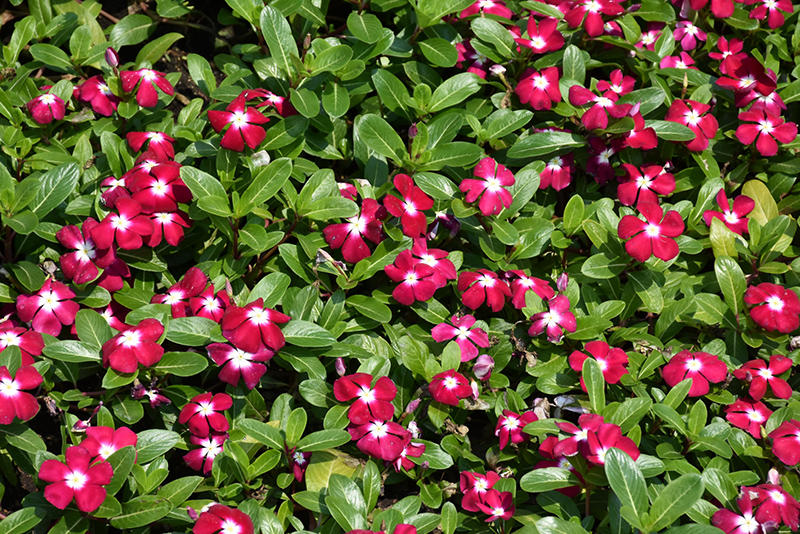|
|
|
| home | about us | loyalty program | products | directions | warranty | garden splendor ® | plant collector | landscaping | |
| Plant Finder | |
|
Pacifica Burgundy Halo Vinca Catharanthus roseus 'Pacifica Burgundy Halo' Height: 12 inches Spacing: 10 inches
Sunlight:
Hardiness Zone: (annual) Other Names: Periwinkle, Vinca Vine Group/Class: Pacifica Series Brand: PanAmerican Seed Description: An outstanding series featuring burgundy and white blooms on stress tolerant plants; thrives well in full sun and warm temperatures with humidity; perfect for beds, containers and hanging baskets; take care not to overwater Ornamental Features Pacifica Burgundy Halo Vinca features showy burgundy star-shaped flowers with white overtones and yellow eyes at the ends of the stems from late spring to mid fall. Its attractive glossy oval leaves remain dark green in color with pointy light green spines throughout the year. Landscape Attributes Pacifica Burgundy Halo Vinca is a dense herbaceous annual with a mounded form. Its medium texture blends into the garden, but can always be balanced by a couple of finer or coarser plants for an effective composition. This plant will require occasional maintenance and upkeep, and should not require much pruning, except when necessary, such as to remove dieback. It is a good choice for attracting butterflies to your yard, but is not particularly attractive to deer who tend to leave it alone in favor of tastier treats. It has no significant negative characteristics. Pacifica Burgundy Halo Vinca is recommended for the following landscape applications;
Planting & Growing Pacifica Burgundy Halo Vinca will grow to be about 12 inches tall at maturity, with a spread of 8 inches. When grown in masses or used as a bedding plant, individual plants should be spaced approximately 10 inches apart. Its foliage tends to remain dense right to the ground, not requiring facer plants in front. Although it's not a true annual, this fast-growing plant can be expected to behave as an annual in our climate if left outdoors over the winter, usually needing replacement the following year. As such, gardeners should take into consideration that it will perform differently than it would in its native habitat. This plant should only be grown in full sunlight. It does best in average to evenly moist conditions, but will not tolerate standing water. It is not particular as to soil type or pH. It is highly tolerant of urban pollution and will even thrive in inner city environments. This is a selected variety of a species not originally from North America, and parts of it are known to be toxic to humans and animals, so care should be exercised in planting it around children and pets. It can be propagated by cuttings; however, as a cultivated variety, be aware that it may be subject to certain restrictions or prohibitions on propagation. Pacifica Burgundy Halo Vinca is a fine choice for the garden, but it is also a good selection for planting in outdoor containers and hanging baskets. It is often used as a 'filler' in the 'spiller-thriller-filler' container combination, providing a mass of flowers and foliage against which the thriller plants stand out. Note that when growing plants in outdoor containers and baskets, they may require more frequent waterings than they would in the yard or garden. Characteristics
Applications
Features & Attributes
|
|
